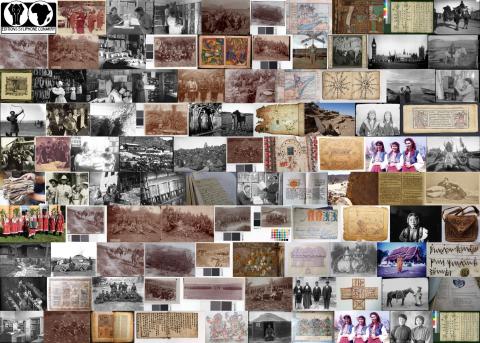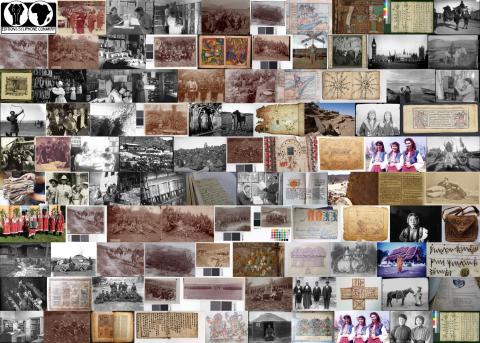Aims and objectives
Nepal is the home of Buddhist Sanskrit manuscripts and significant collections of Hindu manuscripts also exist, especially of the Smarta tradition. Newar people living in small medieval towns have contributed enormously to the development of literary culture in Nepal, with manuscript culture being a part of Newar religious lives. The manuscripts are called ‘Thyasaphu’ in vernacular Newārī. They are not merely handwritten texts, but an object of veneration - special worships, rituals and recitations were also designed for religious texts. The Buddhist Vajracharyas and Shakyas, and Hindu Karmacharyas from the Newar communities, were directly concerned with manuscript writing, recitation and performing rituals.
Nepal has preserved Sanskrit manuscripts intact for about 1300 years. The history of manuscriptology of Nepal attests that manuscripts arrived in Nepal from Northern India from the seventh century onwards. The Muslim invasion in the twelfth century accelerated the flow. The manuscripts were written in local Bhujimol, Ranjana, Kumol, Pracalit Newārī , and Bengali scripts. Two types of manuscripts are in existence: those that originated in Northern India, and indigenous Newar manuscripts written in Nepal.
After completion of the earlier pilot project EAP676, the team continued the work surveying manuscripts in Newār settlements and also Vihāra collections in Newar communities where manuscript culture still exists. Most of them are poor condition. People voluntarily turned up to allow their manuscripts to be surveyed and preliminary data recorded.
In spite of the manuscripts’ importance, few are aware of their literary heritage and little attention has been paid to preserve and disseminate the manuscripts despite their religious and historical significance. Newar families still own manuscripts but unfortunately, most of the precious manuscripts are left to decay and are often now in poor condition. An inability to read scripts and the language, or meagre knowledge of the subject matter, restricted people from reading these medieval manuscripts. At the same time, manuscripts have been sold in the illegal market as commodities. The lack of awareness and absence of attention of concerned authorities on the scattered collections left them on the verge of collapse. They are endangered heritages that require immediate attention.
In addition, original manuscripts are often reworked adding miniatures of deities and giving the appearance of an older manuscript for personal benefit. In some cases texts written on birch bark are also deleted for paintings. It certainly deprives later generations of ancient wisdom contained in the old texts.
The project hopes to preserve medieval manuscripts through surveying individual and Vihara or temple and community collections, and recording preliminary data for each text. Approximately 700-800 manuscripts will be digitised, about 40,000 to 50,000 folios. The manuscript owners will receive training to help them preserve the originals, and the digitised manuscripts will be made available for academic purposes.
The Melvin Seiden Award has been awarded to preserve these collections of endangered medieval manuscripts, a field of particular interest to the donor and in light of the increased nature of the manuscripts’ endangerment following the tragic circumstances of the 2015 earthquake and the loss of much of Nepal’s cultural heritage.
Outcomes
The main focus of the project was to digitise rare medieval Sanskrit manuscripts as well as rescue those threatened by the earthquake of 2015. In total the project were able to digitise 21 separate collections consisting of 687 manuscripts and 28050 folios. These included religious manuscripts related to Buddhism and Hinduism, literary works, medical texts, records of events, and other secular texts. These are important records for Buddhist and Hindu Newars to perform religious duties and also for scholars of Newar Buddhism, Vajrayana rituals, Hinduism, the Vajracharya priests and practitioners and others. Throughout the project workshops and programmes were organised to train staff and local stakeholders, including those from the Newar community, to search, catalogue and digitise the manuscripts.
The records copied by this project have been catalogued as:
- EAP790/1 Gyankar Vajracharya Collection (15th century-20th century)
- EAP790/2 Suprasanna Vajracharya Collection (15th century-19th century)
- EAP790/3 Dev Vajra Vajracharya Collection (15th century-20th century)
- EAP790/4 Prabhakar Vajracharya Collection (15th century-20th century)
- EAP790/5 Dharma Raj Vajracharya Collection (16th century-19th century)
- EAP790/6 Chiba Guthi Collection (18th century)
- EAP790/7 Smriti Shrestha Collection (17th century-19th century
- EAP790/8 Nir Harsha Bajracharya Collection (18th century)
- EAP790/9 Naresh Shakya Collection (17th century-19th century)
- EAP790/10 Naresh Bir Shakya Collection (17th century)
- EAP790/11 Anuj Vajracharya Collection (16th century-18th century)
- EAP790/12 TNS Collection (15th century-20th century)
- EAP790/13 Anonymus Collector (18th century)
- EAP790/14 Chakra Ratna Shakya Collection (17th century-19th century)
- EAP790/15 Mani Ratna Shakya Collection (16th century-18th century)
- EAP790/16 Nirmala KC Collection (17th century-20th century)
- EAP790/17 Manish Shakya Collection (18th century-19th century)
- EAP790/18 Saundryavati Shakya Collection (16th century-20th century)
- EAP790/19 Ratna Man Shakya Collection (16th century-17th century)
- EAP790/20 Vikram Subedi Collection
- EAP790/21 Amrit Ratna Shakya Collection (16th century-20th century)
Due to the cyber-attack on the British Library in October 2023, the archives and manuscripts database is currently inaccessible and we are unable to provide links to the catalogue records for this project.




